This morning (February 7) it was cool (68 F), very foggy and drizzling. The eaglets were hunkered down and I never caught sight of them. Only the female parent was present, drying her wings on a Melaleuca snag near the nest tree.

She then flew to a dead tree along the road where the light was better and also the fog was lifting, so she looked more presentable.
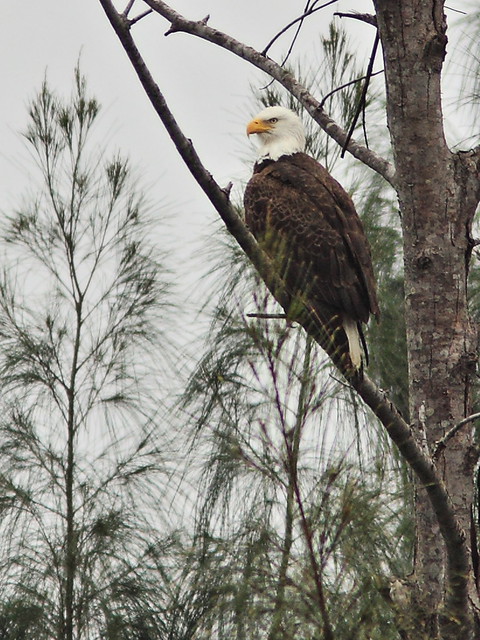
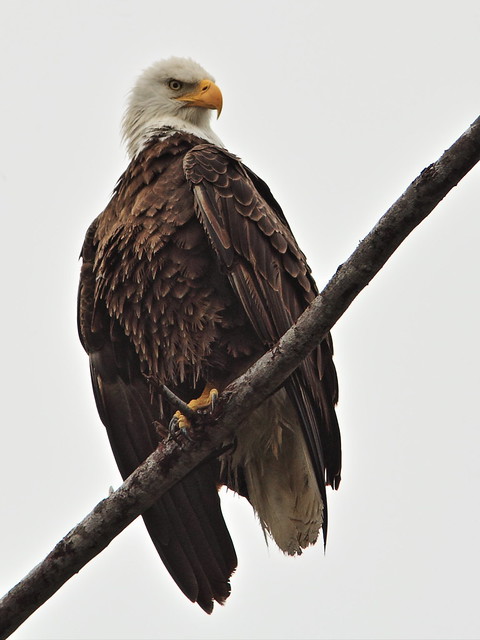
Two days earlier, arriving at the nest a little before 9:00 AM I was joined by several others including local nest watchers Millie, Phil and Mary, as well as Deborah, a newcomer visiting from Illinois who hosts the Evanston Peregrine Falcon Watch, a Yahoo group that she started in 2009.
At first no adults were present and the older eaglet, the twelfth we have observed since 2008 (whom we designate as P Piney 12), was sitting high up in the nest and her little sibling was hunkered down on the other side.
The eggs hatch sequentially in the order they were deposited, about 2-3 days apart. We really do not know the sex of the first hatchling, but Bald Eagles selectively produce a female chick first in up to 2 out of 3 successful nestings. Female Bald Eagles are larger than males at all ages and also "resource intensive,"needing more food to survive.
The ordinary gender sequence in good years is equally FM, FF or MM, which results in a 50-50 sex ratio. If a male hatches out before a female this produces conflict, especially if prey is scarce. The female grows more rapidly and struggles to dominate her older sibling.
Over a 17 year period on two lakes in Saskatchewan, females were the first or only hatchling in 97 instances versus 67 males. The tendency towards producing females from the first egg was more pronounced during years when food was abundant: 68 females to 32 males. (Reference).
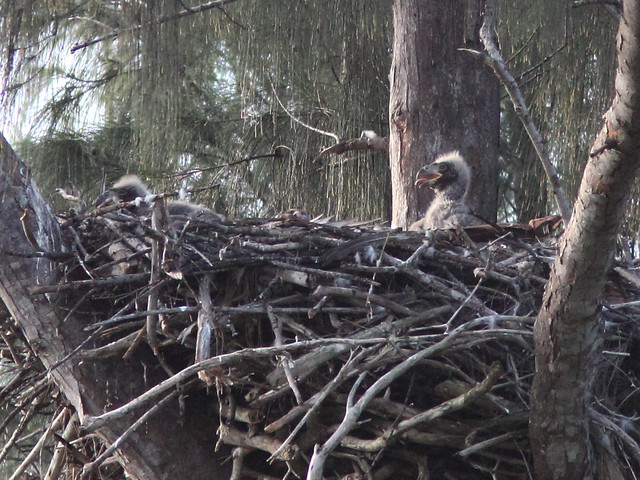
At about 9:03 AM the female parent (the eagle watchers know her as Joy) flew in from the east carrying a large long-legged bird. Bald Eagles have adaptations for catching fish, including bare lower legs, very sharp claws and rough scales on their feet. They are generally grouped with sea eagles or fish eagles, but are very adept at capturing other prey and also eat carrion. This pair seems to catch as many Cattle Egrets and White Ibises as it does fish.
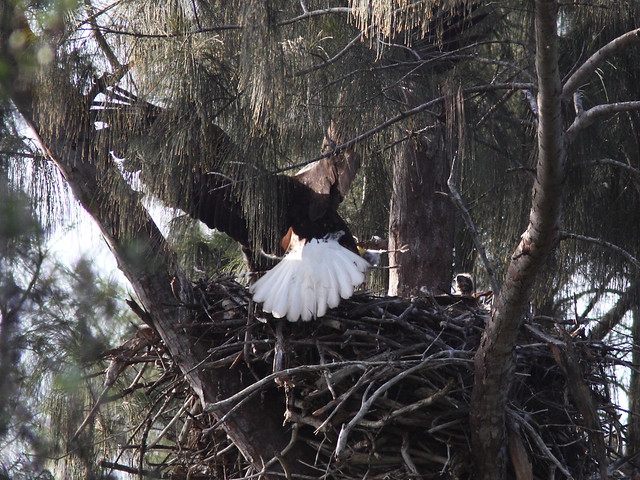
Within seconds, the male (Pride) flew in from the west. The second eaglet, P Piney 13, now on the right, is noticeably smaller and has more natal down than his older sibling.
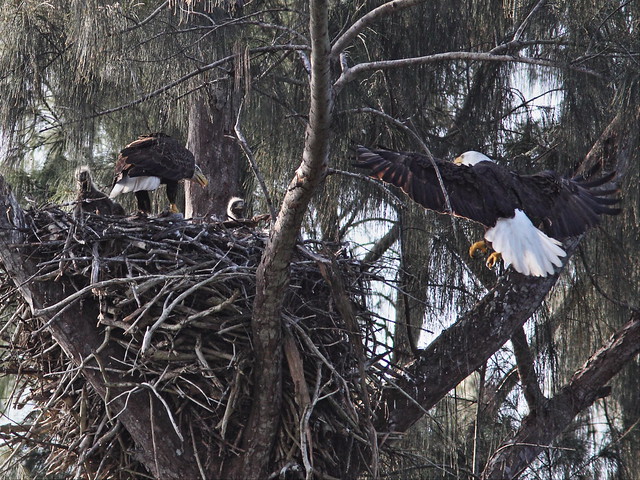
Pride appeared to want to either share in the meal or to feed the eaglets. I think the latter as he has been an excellent provider. However, Joy spread her wings over the prey and rebuffed him.
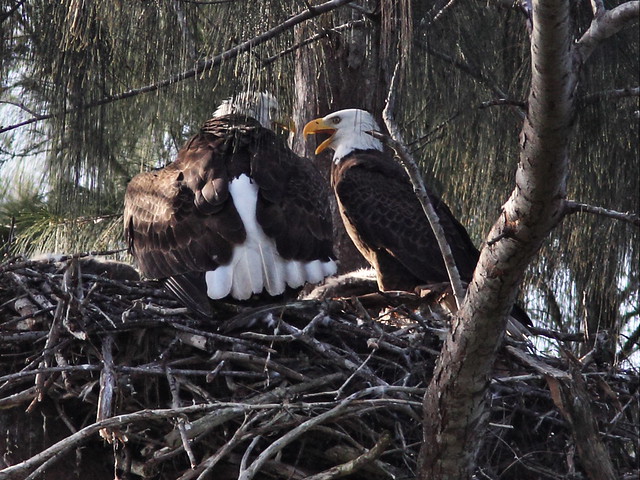
Pride retreated to a perch just above the nest, but continued to protest loudly. Joy screamed back in a wailing call that I had not heard before.
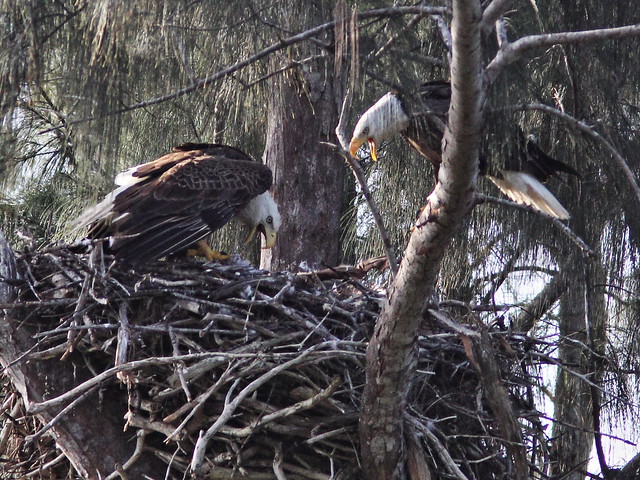
The eaglets kept low during their parents' confrontation, and Joy turned to resume feeding.
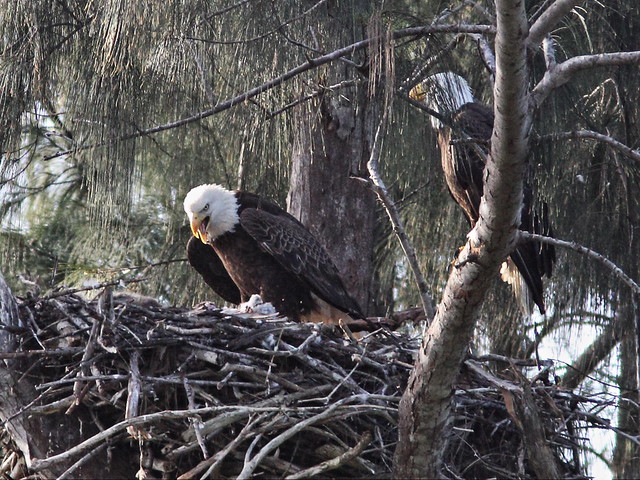
Joy tore at the prey as the eaglets waited.

She continued feeding the eaglets.

P Piney 12 appeared to be trying to grasp the prey with her huge yellow foot! Like little puppies, they grow into their feet.
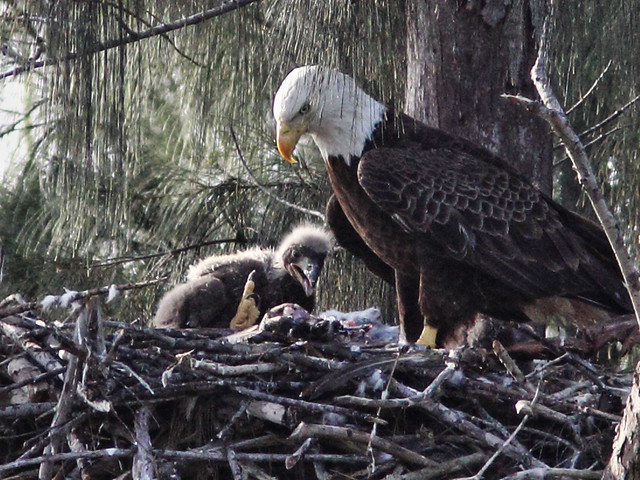
The eaglets suddenly seemed to be begging to be fed by Pride!

Pride returned to the nest but Joy again protected the prey. Note the smaller size of the male, and also his very low forehead, helping us distinguish him from his mate.

They all posed for a family portrait but the eaglets seemed distracted.
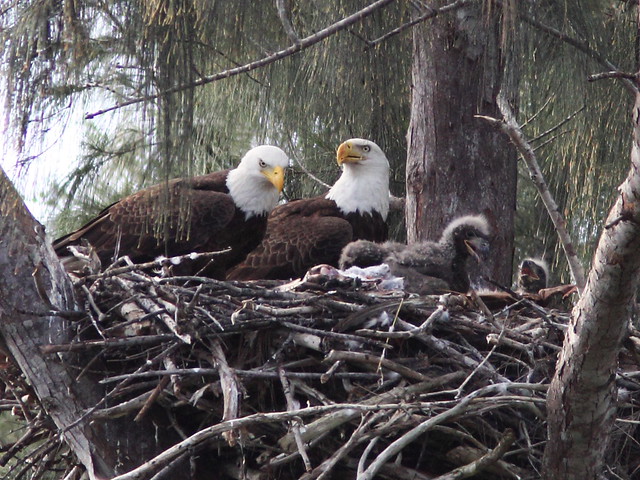
As Pride prepared to fly off, Joy continued to feed her brood, making sure that both got attention.
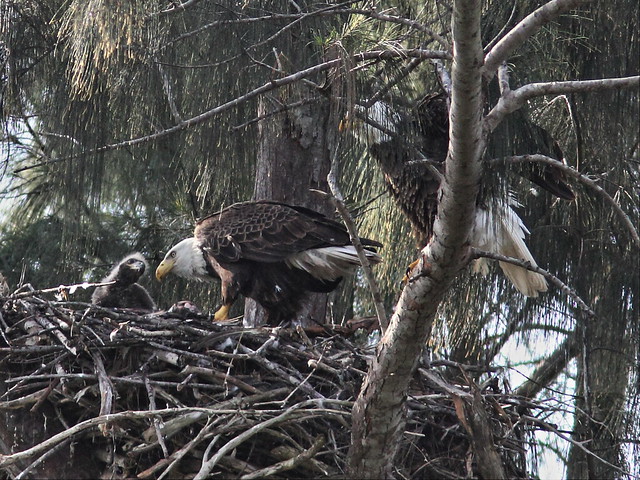
Mother and daughter provided me with a tender photo op.
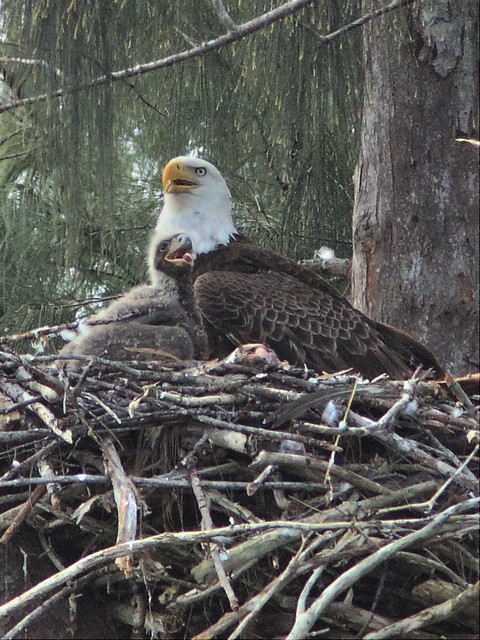
Only 20 minutes later, Pride returned with a fish.
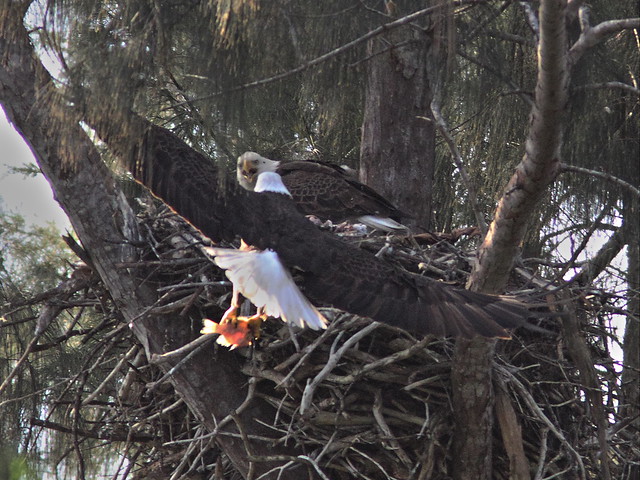
The eaglets engaged in a brief confrontation that appeared rather hostile. The older chick suddenly moved towards her sibling, who retreated as the older one seemed to peck at him.

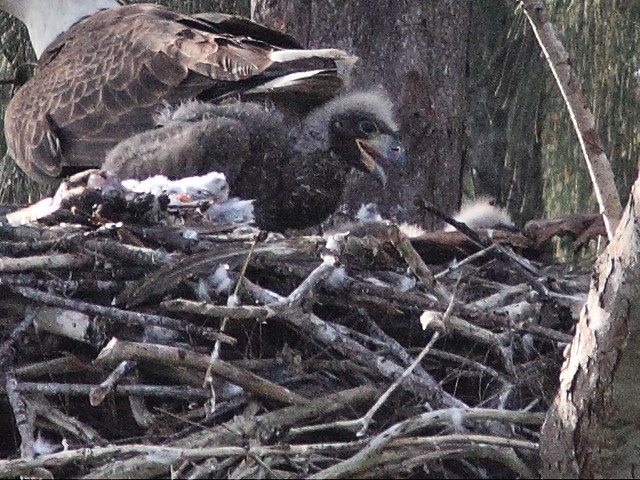
Joy belatedly became aware of their conflict.

Identifying the eagles by name probably helps watchers and the many others who visit our FORUM take a greater interest in them as individuals. Over the years we have noted some distinguishing traits and idiosyncrasies such as dominance, favoring certain perches and Pride's avid care and feeding of the eaglets. There is a danger of romanticizing and anthropomorphizing, as it is often difficult or impossible to know the meaning of certain behaviors. The larger eaglet is not a bully or mean-- she is doing what gives her and the species the best chance of survival.
The eaglets are cool, great collection of photos.
ReplyDeleteHI Kenneth These shots are priceless and well done that you got them so well. it is wonderful to see the adults and how they behave in the nest. Mum seems to keep order around there!
ReplyDeleteWow, a marvellous series. I really enjoy looking at these magnificent birds. I like that the birds are named!
ReplyDeletefamily dynamics at work. amazing raptors.
ReplyDeleteThey are good parents it seems. Wonderful pictures. Sending best wishes to your nest!
ReplyDeleteWow... I didn't know this, thank,you.... Michelle
ReplyDeleteAwesome shots! The eaglets are growing so fast.
ReplyDeleteWonderful post! I enjoyed reading it very much and the photos are excellent.
ReplyDeleteAmazing family shots! That's a great nest.
ReplyDeleteVery nice series, Ken! Good to see a healthy Eagle family.
ReplyDeleteAwesome photowork!
ReplyDeleteWell done!
Wonderful series. A great angle in to the nest. Fine job.
ReplyDeleteWonderful series. A great angle in to the nest. Fine job.
ReplyDeleteI had to come back and look again! Fabulous!
ReplyDeleteThe good news keeps comming Ken, as regards the Eaglets, I hope they are both of a size now, that no harm will come to either of them.
ReplyDeleteAll the best Gordon.
Wow!! They're such an awesome bird. The young look in good shape.
ReplyDeleteThese are the best pictures I've ever senn around a family of birds! You should be very proud!
ReplyDelete